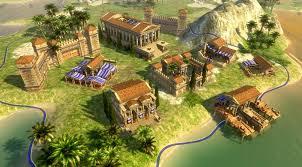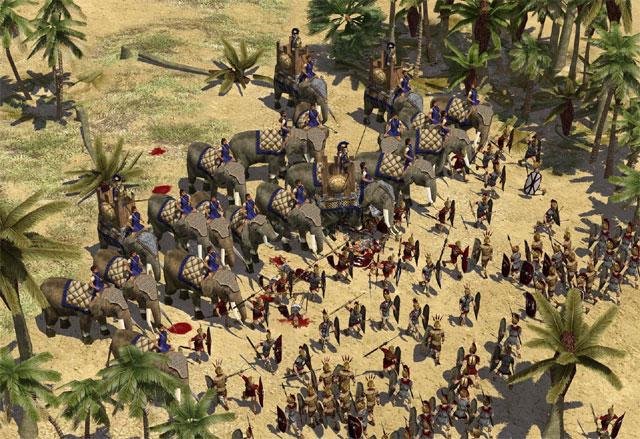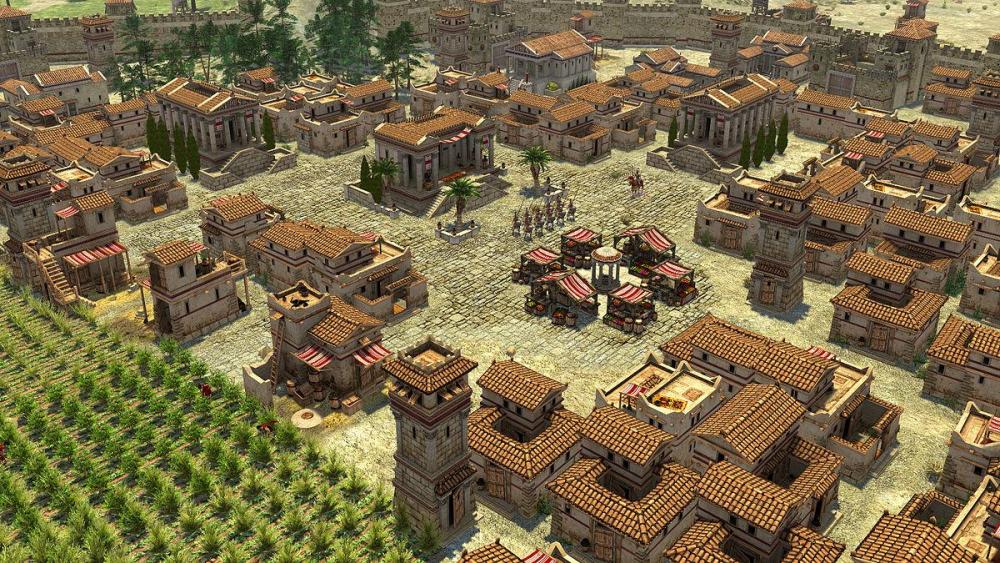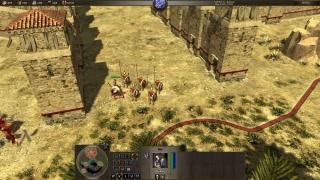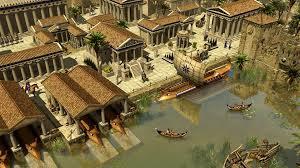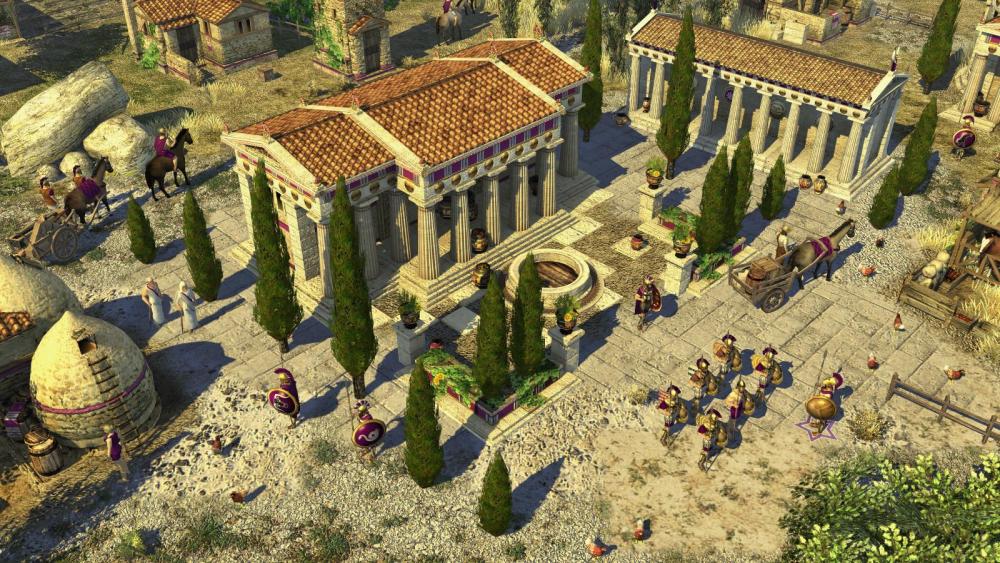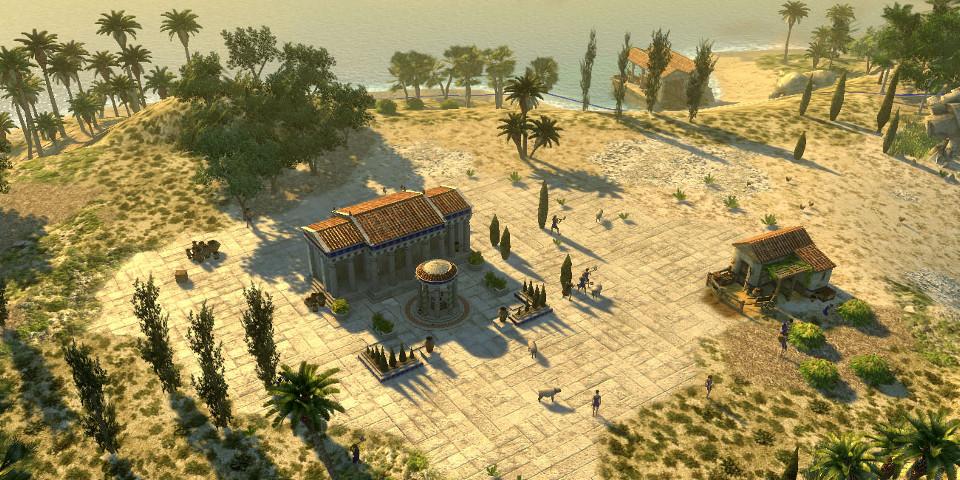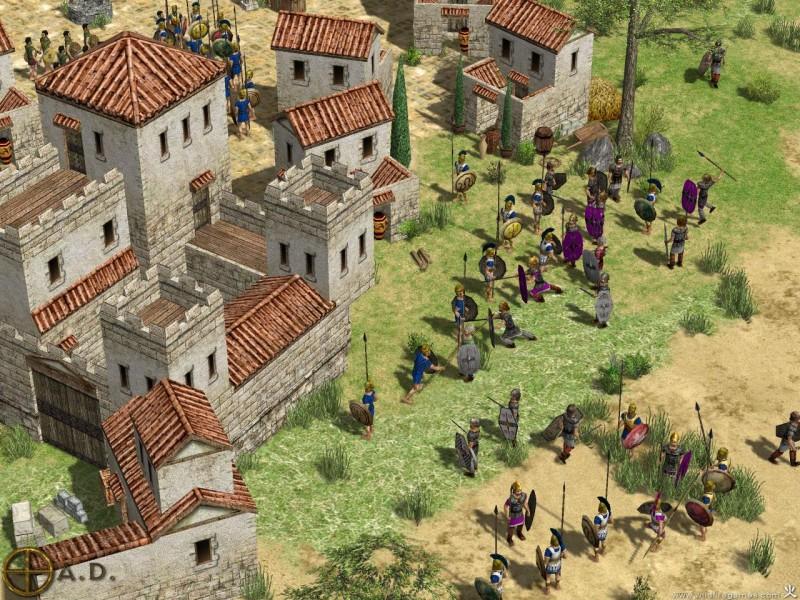
Thorfinn the Shallow Minded
Community Historians-
Posts
1.198 -
Joined
-
Last visited
-
Days Won
15
Everything posted by Thorfinn the Shallow Minded
-
April Update
Thorfinn the Shallow Minded replied to Thorfinn the Shallow Minded's topic in General Discussion
I know, right? Some people might even take this as a joke. -
Hello to 0 A.D. fans and community members As you may have noticed, there have been few recent developer posts on game progress. With that in mind, I will be taking some time to fill in the community with the first April update. A lot of artwork has been done to incorporate more historically informed, hellenistic architecture into the Ptolemy faction. This in turn compelled our resident art workaholic Lord Good to introduce a couple new factions into the 0 A.D. roster that have been sorely missed. Many of you might be thinking that the Chinese might be making their debut, but recent posts have shown that there is practically zero, if you’ll pardon the pun, interest in that faction being in the game. Instead, he has painstakingly created an entirely unique faction to the fray which gives me the pleasure of announcing the first additional faction that will come out this coming alpha: The Thebans. The Thebans are an infantry and cavalry civilisation, famous for their sacred band hoplites and their hegemony of Boeotia. As this highly demanded faction sounded good to a variety of people, the team has taken the adage that more is more, and as a result, there are a few more civilisations to introduce, each more unique than the next. (Here we see Thebes, once proud, under the three year long occupation of Sparta after their attempts to maintain Boetian hegemony.) Next we have Syracuse, a prominent naval power that made use of some of the most extraordinary inventions of Archimedes. (This image depicts the famous Syracusan port, which served as the stage for a decisive naval victory for the the Peloponnesian League during Athens' disastrous Sicilian campaign.) Additionally there is Epirus, employing war elephants and led by the tactical mastermind Pyrrhus. (See a recreation of the battle of Heraclea, victory so great it has been called 'Pyrrhic.') As a rival to Athens in trade and on the seas, Corinth comes into play as credited as the source of triremes and some of the most popular pottery prior to introduction of Athenian black figure ware. (This image shows the cosmopolitan architecture of this city-state.) The Achaean League also makes a showing as the nemesis of Macedonian attempts at conquest. Philopoemen, often called the “Last of the Greeks,” is one of the iconic heroes that leads this federation. (Philopoemen, pictured below, was more famous for his cavalry experience, but since he could walk, is represented as an infantry unit instead.) On the other side is the Aetolian League. This collection of city-states was infamous for its actions of piracy and raiding and functioned as a key rival to the above faction. (This screenshot shows the new and completely unique architectural set that will be used for them.) Joining the roster from Asia minor as well is the Attalid successor state. This nation was centred around the highly defensive metropolis of Pergamum and was a staunch ally of Rome, with its economic and commercial capabilities making it a highly influential regional power. (Pergamum, shown below, was praised as one of the most beautiful cities, housing landmarks such as the Altar of Zeus, which has yet to be implemented into the game.) And coming once again from Peloponnesus is the rival of Sparta, Argos. The Argives fielded a formidable army with an elite contingent that may have even rivalled the best Spartans and were home to a their own unique form of democracy. (See the Argive hoplites nonchalantly drive away a group of Celtic raiders.) I hope that these announcements have made you as excited as me as we embark on a new chapter in 0 A.D.’s history. Much of this might seem worrying to people as the workload to incorporate this many factions into the game may increase substantially, but the team was able to arrive at a unanimous decision regarding this by removing all non-Hellenic/Hellenistic factions from the game since people have been complaining almost constantly about the overly diverse representation of various people groups. Thanks for reading, and stay tuned for 0 A.D.’s forthcoming Alpha 24: Xenophobia. Tune in next month as 0 A.D. begins introducing the ever popular mechanic of micro-transactions in the form of loot boxes.
- 18 replies
-
- 10
-

-
A good time to release a new Alpha
Thorfinn the Shallow Minded replied to av93's topic in General Discussion
Perhaps let's discuss on a more positive note. What upcoming features are you most looking forward to at the moment with the eventual alpha release? -
A good time to release a new Alpha
Thorfinn the Shallow Minded replied to av93's topic in General Discussion
That's why we need to branch out and launch Spork AD. -
Dream of gamer ( 16 players game)
Thorfinn the Shallow Minded replied to Dakara's topic in Gameplay Discussion
0 A.D. the mmo, coming 20?? -
I feel like a lot of this discussion centres around a key sort of point made at a lecture for GDC about 'cursed designs.' Essentially games can sometimes have two or more contradictory goals that make the end game experience they plan to make impossible. The classic RTS game essentially does this by having two components to the game: the economy and the military, both of which require attention to win, but given the realtime nature of the game, this makes it difficult to immerse oneself in. For instance, a player could be having an intense battle when they realise that they've forgotten about the harvest season. This oftentimes leads to designers attempting to rectify the issue by putting the focus on one aspect or the other. Company of Heroes relies purely on area control for the basis of economy while the emphasis remains on a company level with the military. City-builders represent essentially the opposite camp, letting the economy be the driving force of the game. This sort of dichotomy I would say is essential to recognise for the future of 0 A.D, and depending on which aspect is preferred, the developers should work to streamline the other as much as possible. Of course it isn't a matter of going with one extreme, but the limitations should be recognised.
-
I don't get the problem with the infinite queue. I can't say I'm totally correct here, but the amount of resources that could be collected from a site in Rise of Nations were virtually infinite, which is a reasonable basis for the feature. It's a simple quality of life feature that is optional; the same can be said for things such as rally points.
-
Suggestions for 0 A.D.
Thorfinn the Shallow Minded replied to Wijitmaker's topic in Gameplay Discussion
Simple sort of idea that I think is worth considering: Having the Theatron building widely available seems like a bit much. The Spartans were hardly known for their love of drama, and I'd say whenever we do think of Greek playwrights, only Athenians come to mind. That all said, it would make sense for that structure to be exclusive to Athens and perhaps making its effects more interesting than a simple buff to territory. As to what it could be, I can't necessarily say. Maybe it could make workers within x radius work faster; I'd be open to better ideas though. Another structure that I would say is sorely missing from the Athenians is having an academy structure for a variety of technologies. Maybe there could even be minor yet exclusive ones that reflect philosophical teachings of various schools. The list goes on. -
Suggestions for Realism Improvement
Thorfinn the Shallow Minded replied to BombaRulz's topic in Help & Feedback
So just to start off, I'd say that a lot of these ideas are great, but adding complexity does a number of things. Probably the most notable one is that it increases the skill cap of the game, which is critical in the RTS genre. Some games are more economically focussed (usually city-builders) while others are more combat based (Company of Heroes comes to mind). In short, each feature should do the following: make the game more in depth without requiring a significant strain on a player's attention. I'd say that the idea of a food being automatically used up by existing units would be a great option. It could provide a much more interesting way for how people would spend that resource since a raid could quickly cut off that source. Roads I think would be a fantastic option. I doubt that many expert players would use them, but that would definitely allow for players who enjoy base-building to have a much more enjoyable time. -
===[TASK]=== Improve hero portraits
Thorfinn the Shallow Minded replied to Lion.Kanzen's topic in Official tasks
Here are some more general points I'd like to give for your design, Lion. Focus on contrast that brings out the direction of the lighting. All too often it feels like the darks are not dark enough; that kind of shading is crucial to making facial features pop out. Next of all, I'd say that your faces look good. Unfortunately good is problematic since the small irregularities that do exist seem even worse because of that (Think of the uncanny valley.). Sadly, there's not an easy fix for getting the placement of facial features right aside from meticulous practice. I haven't really applied myself to any significant degree on Illustrator or other graphic design programs to demonstrate, but a useful trick I've done is figure drawing. Spend different intervals of time trying to draw different poses of people, and the insight you can get from just a couple hours of practice is surprising. Best of luck. -
===[TASK]=== Improve hero portraits
Thorfinn the Shallow Minded replied to Lion.Kanzen's topic in Official tasks
i really like what's going on with the picture thus so far, Stan. My one general suggestion I'd offer is more irregularities. The stubble for instance would seem more plausible with variation on density. Currently the facial hair has practically no fading before going to the part with no stubble. Unless he is trimming this stubble in a particular way, I've found that men have the most density right around the goatee area. From there it gets a lot more patchy especially leading out to the extremities. Aside from that, I would like to see a lot more small flaws. It could be small scars, wrinkles, freckles, the list goes on. Granted, that's just my non-expert opinion, but again, I think that the work looks great regardless of whether any of those suggestions get implemented. -
NoMaDiC CiViLiZaTiOnS
Thorfinn the Shallow Minded replied to wowgetoffyourcellphone's topic in Delenda Est
Then again there were raven scouts in Age of Mythology... -
The flaw with the Briton team bonus lies in the healer. Healers alone are simply purposeless unless there is a secondary purpose provided. I personally wouldn't be against the idea of them converting units, but I'm sure that alternate options; priests served many roles that could be represented such as a simple aura that improves attack or improves gathering speed. The list goes on.
-
Suggestions for 0 A.D.
Thorfinn the Shallow Minded replied to Wijitmaker's topic in Gameplay Discussion
Strictly speaking siege weapons tended to be just built on site. I'd recommend just to have a unit that is trainable called the sapper. It would be vulnerable to melee attack but would itself have a decent building attack along with a much more important role of being able to construct siege engines. -
Fork AD
Thorfinn the Shallow Minded replied to fatherbushido's topic in Introductions & Off-Topic Discussion
As a proposal for those interested in making one, I'd recommend making it based on the greek letter ψ. It has the advantage of looking like a fork and being classy as well. -
Fork AD
Thorfinn the Shallow Minded replied to fatherbushido's topic in Introductions & Off-Topic Discussion
What I want to see is a logo. I looked around the internet for 'epic forks' yet found nothing satisfactory for meme purposes here. That needs to change. -
Do you think that forests of a particular density should be impassable? One of the things that does bother me about 0 A.D. map design is the complete lack of proper chokepoints, and this would do a good job of changing that. Perhaps there could also be a middle ground. Some units like skirmishers could move through them, but most would be unable to do so. On the other hand maybe cavalry could be the only ones. Thoughts?
- 1 reply
-
- 2
-

-
0 A.D. A24 gameplay patches
Thorfinn the Shallow Minded replied to Nescio's topic in Gameplay Discussion
By and large I like a lot of these changes done. They're minor, but a lot of them are quality of life things that definitely seem like they should have been implemented. I was wondering though if there would be a way to have people working at an economic task could have a different movement rate when they are armed. I feel like that would be the ideal option; coding it might be admittedly difficult though. -
Age of Empires was never meant to be played indefinitely; matches tend to last 20-70 minutes depending on players. Running out of wood rarely the decisive issue when things like gold and stone deplete much faster. You're clearly looking for something else in single player that can't be found in Age of Empires.
-
I don't really follow your critique of Guns, Germs, and Steel, Sundiata. Simply speaking, the book explains the decisiveness of particular technological advancements that allowed for europeans to defeat significantly larger forces in battle and effectively subjugate empires that were sophisticated on their own right and then explains a lot of the factors required to develop such advancements. The topic is straightforward, and the author doesn't diverge. There were impressive advancements to be found in the Americas that are worth study, but those were largely unrelated to the thesis and were not addressed. How is this a problem concerning historiography is baffling to me.
-
I think that it would be fair to point out that the armour that the Metatron is referring to is post-Marian reform. The point being that soldiers at that time were provided with their own arms due to their being professionals. Pre-Marian legionnaires would have supplied themselves with helmets and the like, meaning that it would be unlikely that there was one single kind of way to identify a centurion.
-
[Request] more realistic walls
Thorfinn the Shallow Minded replied to Nescio's topic in Art Development
There was a proposal a while ago to make walls be a matter of making a circuit around a selected Civic Centre with the press of a button. This would make the walls be able to get away with being directional without the aforementioned problem. Obviously this restricts the player's ability to use walls compared to Age of Empires and was probably scrapped for that reason. That's not to say that someone couldn't mod that sort of thing into the game though... -
Age of Empires IV
Thorfinn the Shallow Minded replied to borg-'s topic in Introductions & Off-Topic Discussion
Not to say that this justifies that choice, but Age of Empires III lacked blood.

